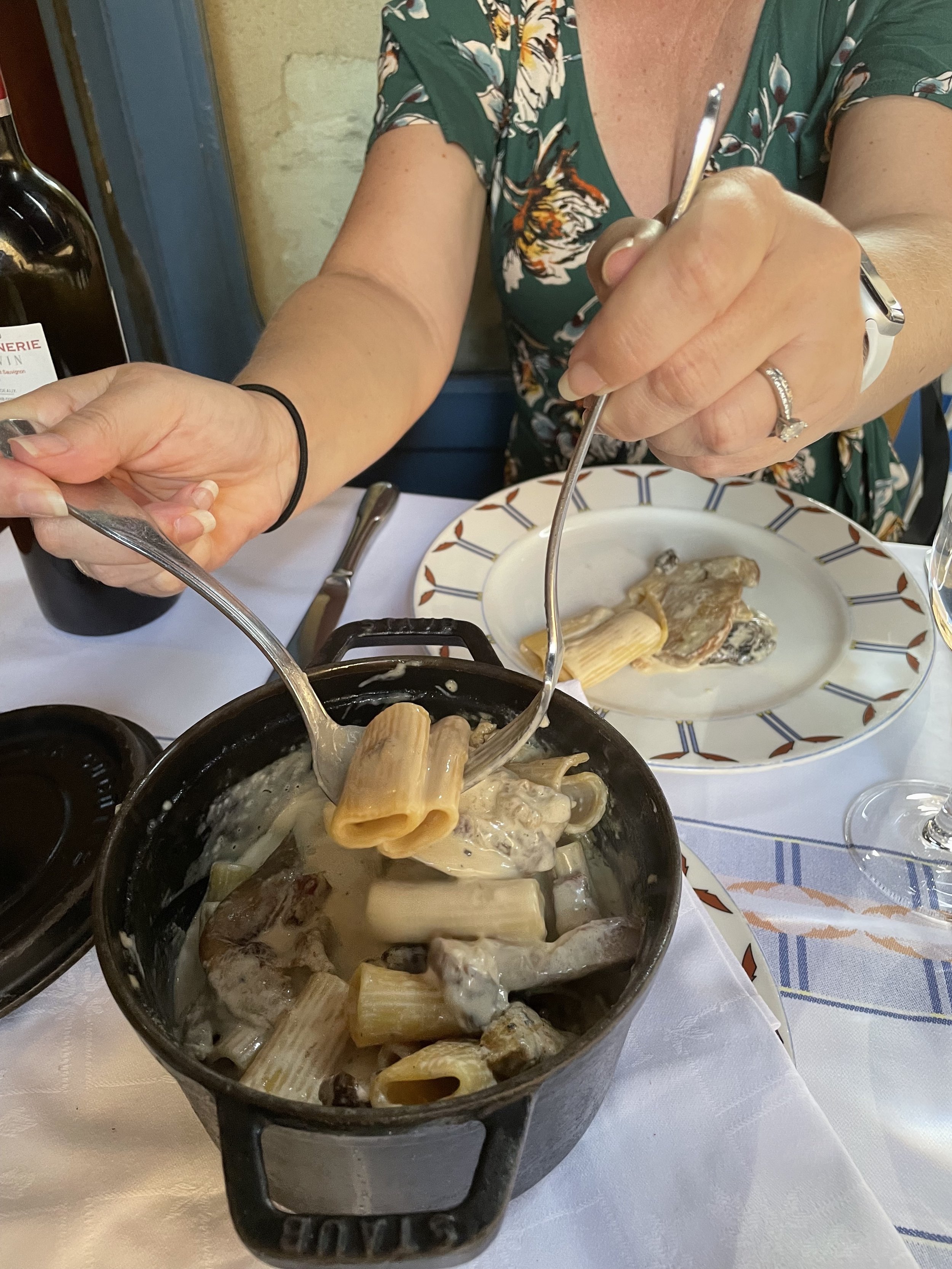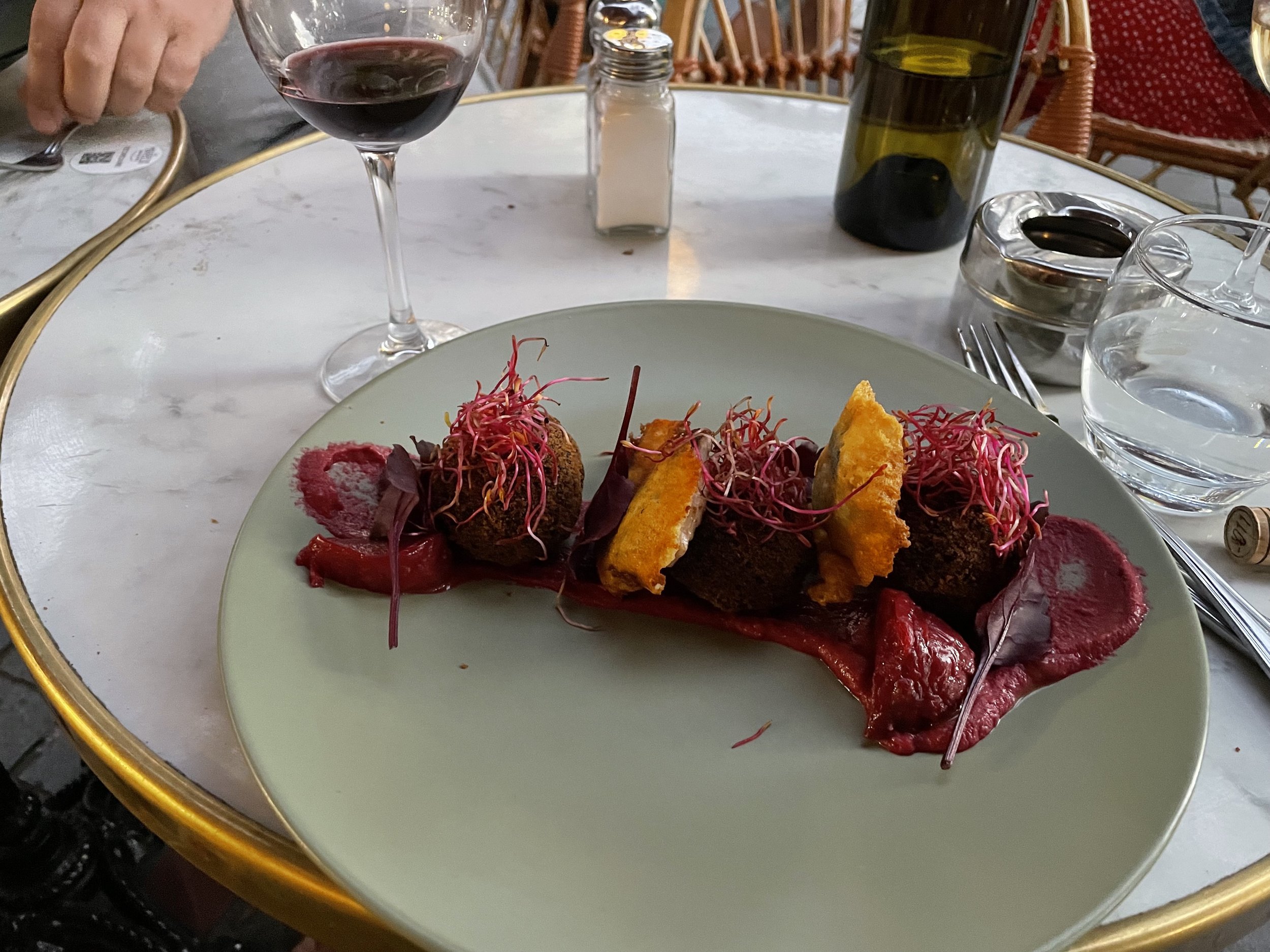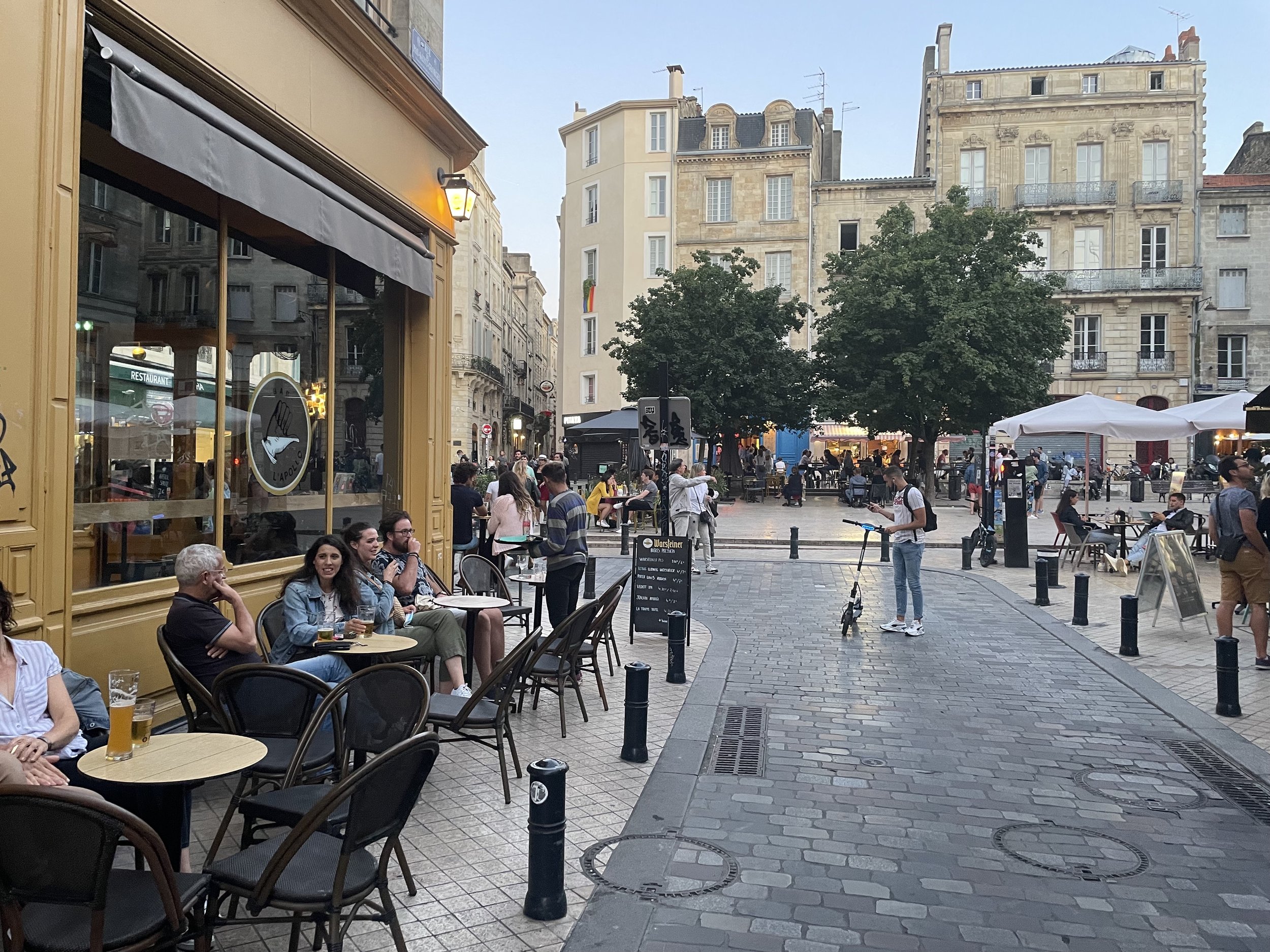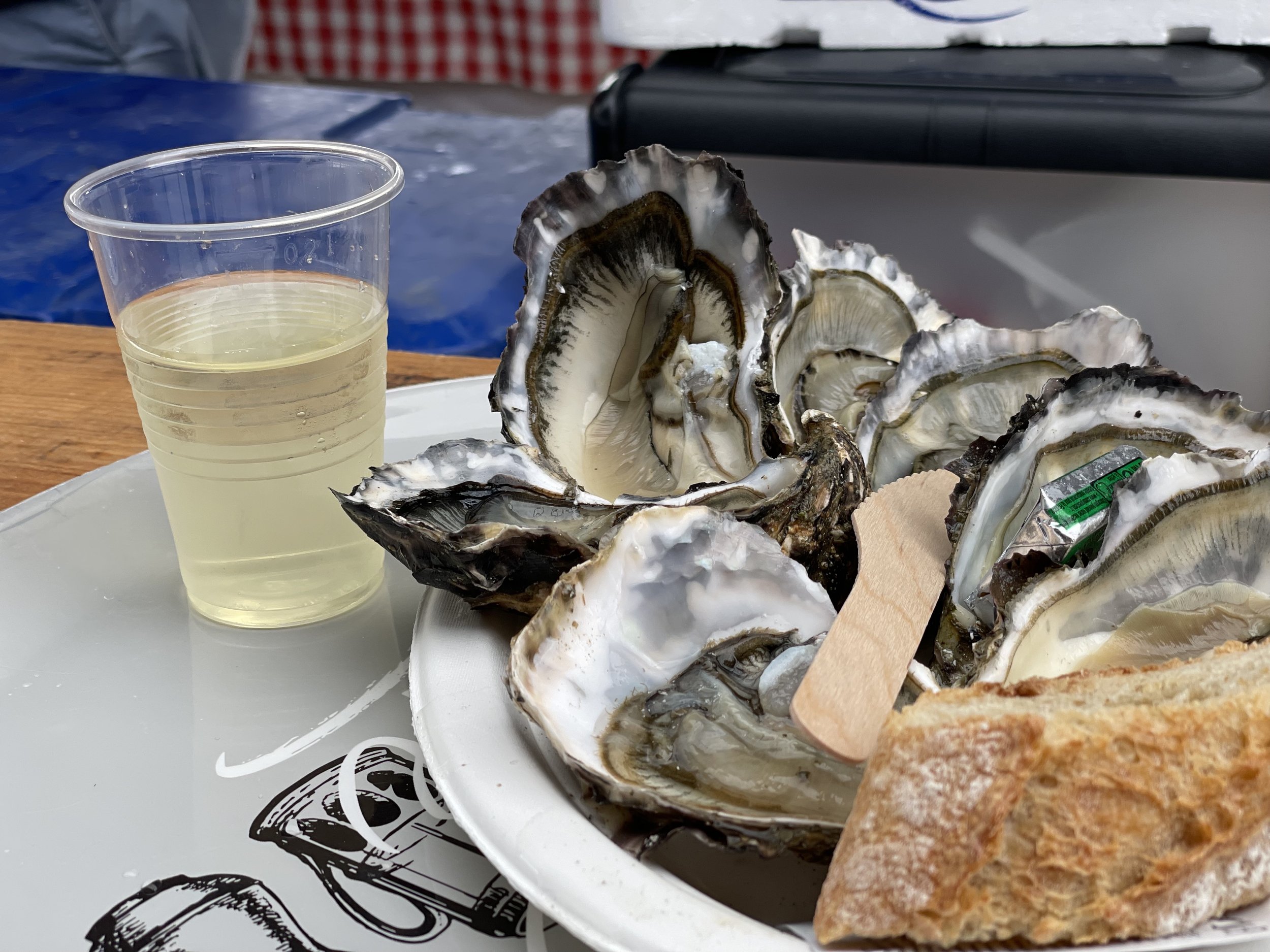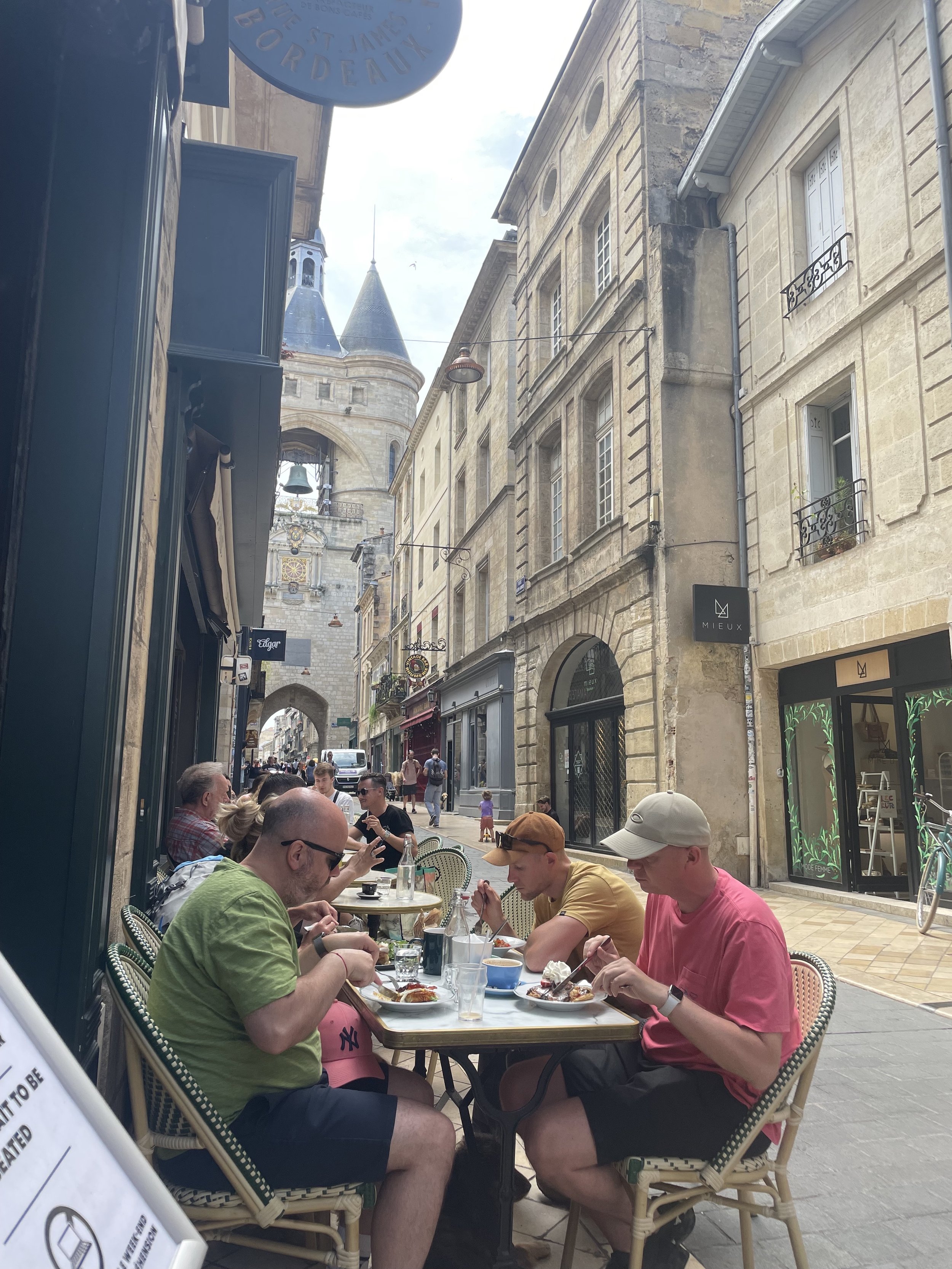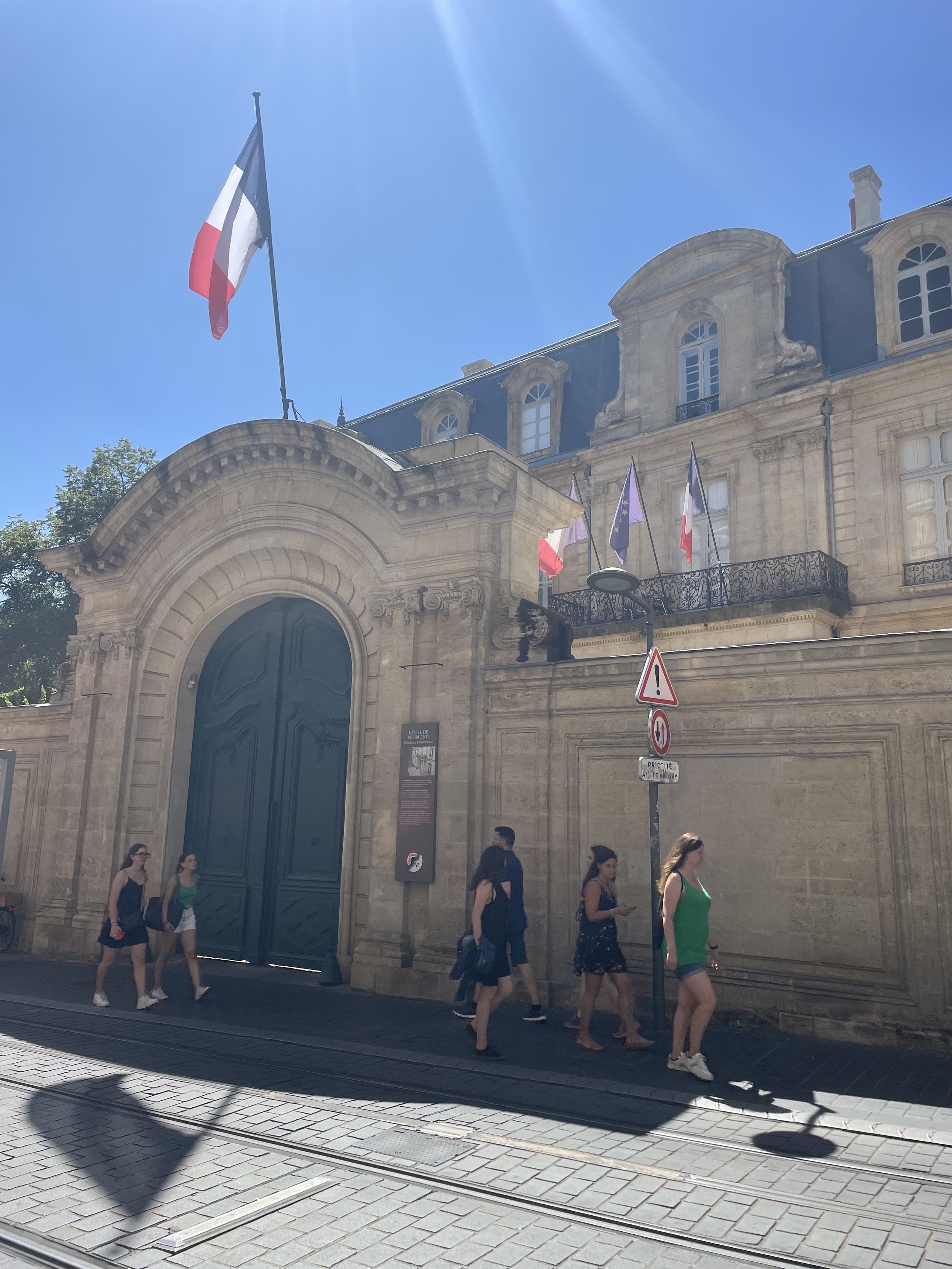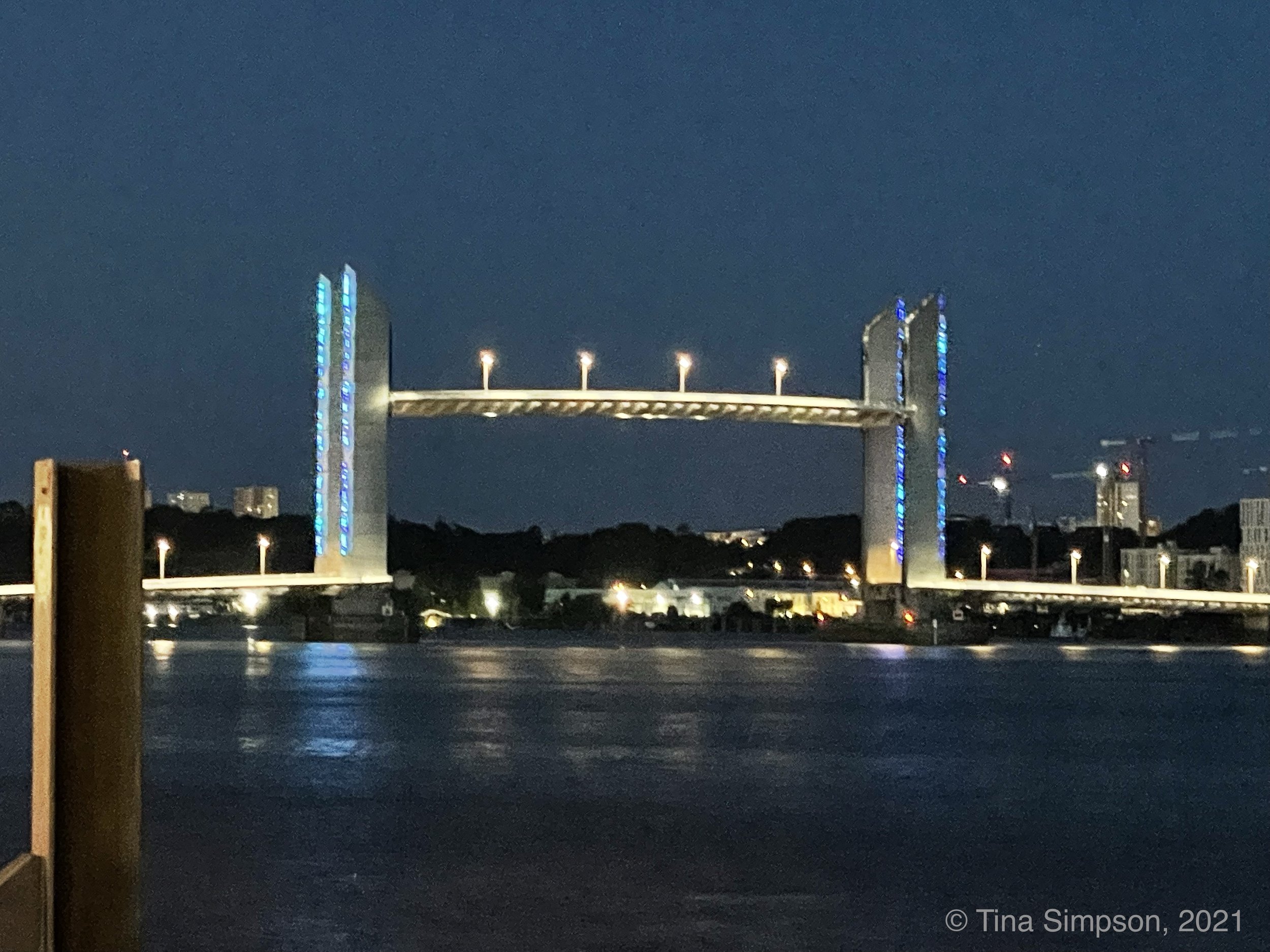Uncorked: A primer on the culture and history of Bordeaux
I’m a history nerd. When travelling, reading up on the history of a place is the way that I connect with a place (well - that and the food). So here are a few notes (trivia - but not trivial) about Bordeaux’s history, culture and whys and wherefores that I think anyone visiting should know.
Bordeaux is a World Wine Capital
Let’s get started with that. If you know nothing else about Bordeaux - you already know this, so you are ahead of the game.
Furthermore, it’s viticultural history reaches far back. Let’s say that if all roads lead to Rome, the roman road from Bordeaux is lined by vineyards. (Rome couldn’t have been so bad if it translated to more wine for everyone, right?)
But seriously. Wine (and specifically red wine) is life in Bordeaux. And the Bordelais proudly and emphatically embrace this (as demonstrated by the phenomenal drone show from this year’s La Fête du Vin) and the fact that my local Carrefour market dedicates a good 20% of floor space to wine.
2. Bordeaux goes baaaccck.
As an American, where there is so much more space, and there isn’t the same degree of archaeological and historical record, it always amazes me to be in Europe, where the past is so much a part of the present (walking down a cobblestoned street to find a roman stadium on the left on the way to the market is never not going to be surreal and astounding). But to return to Bordeaux’s history – the first evidence of a permanent settlement dates to around 300 BC when it was settled by a Celtic Tribe (the Bituriges Vivisci). It was then known as Burdigala, which is believed to translate to “shelter in the swamp” in ancient Basque. Can we all agree that the more modern “By the Waters” translation is a step up branding-wise?
Bordeaux was conquered by the Romans in 56 BC. The Romans Rome-d the town out, building aqueducts, ampitheatres etc. Palais Galliene, abutting a quiet neighborhood in the center of the city, is the only remaining structure from this period when Burdigala was the administrative center of the province of Aquitania.
After the Romans, there were the Visigoths, the Vandals, the Franks, a little light (ok, not so much) pillaging by the Vikings before we get to…. the English.
3. The Third of the Three English Lions.
Bordeaux (as well as Aquitaine and Gascony) was an English domain from 1152, when Eleanor of Aquitaine married Henry II of England (bringing the Duchy into the Plantagenet Empire) until 1453 when the region was ceded to Charles VII after the Hundred Years War.
Eleanor (or Alienor) was the eldest daughter of William X, the Duke of Aquitaine, and became the Duchess following her father’s death in 1137. She married, firstly, Louis VII, King of the Franks, in Bordeaux at the Cathedrale Saint-André. The marriage was less than a success, despite two children and a couple's trip to the Holy Land as part of the Second Crusade. Eleanor complained that her husband was “more monk than man,” and Louis reacted poorly to rumors of Eleanor's putative flirtation with her uncle, Raymond of Toulouse. The marriage was annulled based on consanguinity (the “get out of jail free card” of royalty in the medieval period) in 1152. Shortly thereafter, Eleanor married (the future) Henry II of England, expanding the Angevin empire southward.
Despite her marriage, Eleanor continued to exercise sovereignty over Aquitaine and administer it herself (later delegating authority to her eldest son, the future Richard I); this was a source of tension in the Plantagenet home life (the private lives of Norman kings make #Succession look soft and fuzzy).
This period relaunched Bordeaux as a wine exporter and became known as the Golden Age for the city. While known as the English Rule (I’ve even heard it referred to as the English Occupation) - this moniker may not be fair. After all, the Norman Kings were as much French - in culture, outlook, and material interests - as English at this time. French was the language of the Plantagenet kings' courts - whether that court was held in London, Chinon, or Bordeaux. Eleanor’s son, Richard I, famously spent only six months in England during his ten-year reign, preferring Aquitaine as his base.
About “The Three Lions”
The Plantagenet Coat of Arms as designed by Richard I features three lions, putatively representing the Crown’s three primary domains: England, Normandy, and Aquitaine.
4. Wine is Life in Bordeaux – but food is always important
Bordeaux is a culinary giant and is home to 45 Michelin-starred restaurants. Typical Bordeaux dishes include Magret de Canard, foie gras, oysters from the nearby Arcachon Bay (up to 70% of oysters in French derive from the Bassin d’Arcachon), and Macarons de St. Émillion (a nearby town which, along to Saint-Jean de Luz in the Basque country has a claim to the ‘original’ macaron in France). To appreciate the joy the Bordelais take in wine and good food, it is best to visit Bordeaux in the summer when all the world is in a holiday spirit, and stepping into the many courtyards from side streets is like stepping into a big party.
5. Bordeaux was one of the primary French slave port cities in the transatlantic slave trade.
Between 1672 and 1837, at least 480 slaving expeditions were launched from Bordeaux, resulting in the kidnapping and enslavement of approximately 150,000 individuals from West Africa. Throughout the 18th century, Bordeaux sent an average of 18 ships a year as part of the triangular slave trade, amounting to about 16% of all French traffic. While the number of slaving expeditions originating in Bordeaux was a fraction of the 1,700 expeditions launched from Nantes, Bordeaux was arguably one of the greatest beneficiaries of the slaving economy. This was due to two reasons: first, its westerly location made it a convenient destination for merchant ships returning from the Caribbean and Americas, leading it to be the primary port of call for merchants of all nationalities in the triangular trade. Before the French Revolution, 40% of all colonial French trade occurred in Bordeaux. Secondly, Bordeaux and the Bordeaux merchants had an outsized presence and influence in the plantations of Saint Dominique, where 40% of colonists came from Bordeaux and the surrounding region.
The wealth of the triangular trade, slavery, and the plantation systems created a second “Golden Age” for Bordeaux, with many of the city’s most elegant buildings and style (The Place de la Bourse, the Grand-Théâtre) dating from this period.
Bordeaux has only begun to confront this dark passage of its history, which funded so much of the city’s extraordinary wealth. For example, it wasn’t until 2009 that the Musée d’Aquitaine (a museum documenting the region's history from the Mesolithic era onwards) established a permanent exhibition on the slave trade and the Caribbean plantations that constituted the foundation of the city’s modern wealth. In 2005, Haiti donated a bronze bust of the Toussiant Louverture, the formerly enslaved Haitian General and leader of the Haitian Revolution (discretely located on the right side of the Garonne along the Quai des Queyries). The following year, Bordeaux installed a more prominently placed ground-level plaque in front of the Bourse Maritime, recognizing the slave trade and its victims. In 2013, a statute of Modeste Testas (born Al Poussei), an Ethiopian woman enslaved by the Bordeaux Testas merchant family, was erected near the Quai des Chartrons as a representative of the millions of people brutalized, enslaved, and killed through the transatlantic slave trade.
Statue of Modeste Testas (photo by author, 2021)
6. When in doubt, decamp to Bordeaux.
This is good life advice – but it has also been a repeated tactic of successive French governments in times of peril. Bordeaux served as the provisional seat of government during the Franco-Prussian War (1871), World War I (September 1914, during the first Battle of the Marne), and World War II (1940). In those rare instances when Paris is not a good idea (“I remember every detail, You wore blue, the Nazis wore grey”), Bordeaux fits the bill.
Aside, the Hôtel de Nesmond, the Prefecture of the Gironde and seat of government from June 14th until the dissolution of the Third Republic in July 1940.
Bordeaux’s tenure as the seat of government in 1940 was brief but acutely consequential. President Reynaud, hoping to continue the war from the French colonies in North Africa, dispatched General de Gaulle to negotiate a radical political and military union with the United Kingdom. It was at the Hôtel that President Reynaud took the call from de Gaulle on June 15th detailing the terms of the proposed merger of the two nations. The French Government vigorously rejected the proposal. Reynaud resigned; Phillipe Petain assumed the premiership and immediately sought terms with Germany.
7. The Pervasive Legacy of Chaban-Delmas
The “towers” of the vertical lift Chaban Delmas Bridge (Photo by Author, 2023)
The rebuilding of Bordeaux after the war (and for a few more decades after that) was inextricably tied to the long-time former Mayor of the city, Jacques Chaban-Delmas, who served in that role for 48 years (1947-1995). Chaban-Delmas was an early member of the Resistance and a recurring member of de Gaulle’s government.
Monuments and edifices bearing his name are littered across the city, from his bronze statue in Pey Berland, to the city’s football stadium and the (extraordinary) vertical-lift bridge crossing the Gironde that was opened in 2013.
Chaban-Delmas’s landmark contribution to Bordeaux was the development of the Meriadeck commercial center in previously impoverished section of the city. The shopping center was first conceived in 1955, with construction finishing in 1977 – which brings us to an important lesson – if you are planning DIY or renovations in France, expect it to take 3xs longer and be more expensive than on the other side of the Atlantic but the final product can be magnificent.
8. The “Very Essence of Elegance”
Or such was the verdict of Queen Elizabeth II, when she visited the city in 1992. Elegance is not only the quality of graceful attractiveness, but requires an element of simplicity. And Bordeaux and the Bordelais exhibit this. Despite the grand buildings, detailed Mascarons (decorative “masks” along building the stone building facades) and ritzy stores, there is an underlying simplicity and accessibility of the city. Bordeaux and the Bordelais know what is important in life, and vigorously practice the tenet: eat, drink, be merry, and always turn up well turned out.
- fin -
Selected Sources
Jane, Anson, Inside Bordeaux: The châteaux, their wines and the terroir, Berry Brothers and Rudd, London (2020) pp 15-22.
Anthony Blond, A Brief History of the Private Lives of the Roman Emperors, Hatchett (2012).
Silvia Marzagalli, “French Colonial Policy, Warfare, and Eighteenth-Century Atlantic Trade,” Yale, April 30, 2018.
Invisible Bordeaux, “How Bordeaux is Acknowledging its Slave Trade Past, (February 2020).
67 Pall Mall, “History of the Slave Trade in Bordeaux” a short (14 minute) documentary, 2021
Musée de la Liberation de Paris, “The Exodus Day After Day” (timeline of the evacuation in advance of the Fall of France)
Dominic Tierney, “When Britain and France Almost Merged Into One Country” The Atlantic (August 8, 2017).




